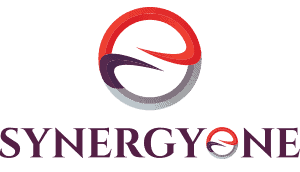Interview Tips
Have you ever encountered Interview questions like:
“Can you give an example of how you appeased a customer disappointed with a service or product?”
“How do you respond to negative feedback or bad reviews? What is your process?”
“How do you interact with co-workers who approach tasks differently?”
These are examples of behavioral interview questions. The purpose of behavioral interview questions is to understand who you are, how you think, and how you approach real-world problems. Your answers to these behavioral interview questions can help the Interviewer gain insights into your decision-making process, how you respond to challenges, your teamwork and leadership skills, how you resolve conflict, how you react to pressure, and how you fit into the job role.
Behavioral interview questions are a common part of the hiring process. Employers ask these questions to understand how you’ve handled specific situations in the past, as your responses can offer valuable insights into your problem-solving abilities, teamwork skills, leadership potential, and overall suitability for the role.
One of the most effective methods to successfully answer behavioral questions confidently is the STAR method: Situation, Task, Action, and Result. The STAR method invented by DDI is a structured approach that ensures you provide clear, concise, and compelling responses. Let’s break down the STAR method and how you can apply it to answer interview questions with ease.
1. Understand the STAR Method
Situation: Start by setting the stage. Describe the context of the scenario you were involved in. What was happening, and why was it important? Be specific but brief. The situation is the introduction to your story.
Task: Next, explain the challenge or responsibility you faced. What were you trying to achieve or resolve? This part highlights your role and the expectations placed on you.
Action: Here’s the crucial part, what did you do? Describe the specific steps you took to address the situation. Focus on your actions, not what the team or group did, as the interviewer is interested in understanding how you contributed.
Result: End with the outcome. What happened as a result of your actions? This is your opportunity to showcase how your efforts made a positive impact. Be sure to quantify the results when possible, such as stating percentages, time saved, or goals achieved.
2. How to Structure Your Answers Using STAR
Here’s a breakdown of how you can use the STAR method to answer a common behavioral interview question:
Question: “Tell me about a time when you had to manage a challenging project with tight deadlines.”
Situation: “In my role as a Scrum Master at my previous company, I was leading a development team working on a software product that was critical for the company’s next big launch. We were already working against tight deadlines when unexpected changes were introduced, and the deadline was moved up by two weeks.”
Task: “My task was to ensure the project was delivered on time without sacrificing quality, while keeping the team motivated and focused despite the added pressure.”
Action: “I first re-evaluated the project scope and met with the team to reprioritize tasks based on the new timeline. We broke down larger tasks into smaller, manageable components and held daily check-ins to track progress. I also communicated openly with stakeholders to manage expectations and ensure everyone was on the same page.”
Result: “As a result, we were able to complete the project one day before the new deadline, with no major issues or defects reported after launch. This allowed the company to meet its launch target, and the product received positive feedback from early users.”
3. Tips for Answering Behavioral Questions with Confidence
Practice Makes Perfect: Before the interview, reflect on your past experiences and practice structuring your answers using the STAR method. Think of examples that demonstrate key skills like teamwork, leadership, problem-solving, and adaptability.
Be Concise: Behavioral questions often require detailed answers, but avoid rambling. Keep your responses focused on the essential points and stay within 1-2 minutes per question.
Highlight the Positive Outcome: Even if the situation was challenging, aim to frame your response in a positive light. Focus on what you learned, how you grew, and how your actions contributed to a successful outcome.
Use Varied Examples: It’s important to draw from different aspects of your experience. Don’t just focus on one type of situation. Think about examples from various jobs or roles where you demonstrated the skills the interviewer is likely looking for.
Stay Calm and Collected: Behavioral questions can be tricky, especially if you’re caught off guard. Take a moment to collect your thoughts, and don’t be afraid to pause before answering. Structured responses using the STAR method will give you the confidence you need to stay focused and clear.
4. Common Behavioral Interview Questions and How to Apply the STAR Method
Here are some other common behavioral interview questions you can prepare for using the STAR method:
“Tell us about a time when you dealt with a difficult client or coworker.”
This question is used to highlight your conflict resolution or communication skills.
“Give an example of when you had to make a difficult decision.”
Answering this question will show your problem-solving skills and how you handle responsibility.
“Describe a time when you led a team to success.”
This Illustrates your leadership abilities and how you motivate others.
“Tell me about a time you failed and how you handled it.”
Answering this question demonstrates your resilience and what you learned from the experience.
The STAR method is a powerful tool to help you navigate behavioral interview questions with clarity and confidence. By breaking your answers down into manageable pieces: Situation, Task, Action, and Result, you’ll ensure your responses are clear, concise, and impactful. With practice, you’ll be ready to handle any behavioral question an interviewer throws your way. Good luck!
What other topics would you like us to write about? Let us know in the comments.



